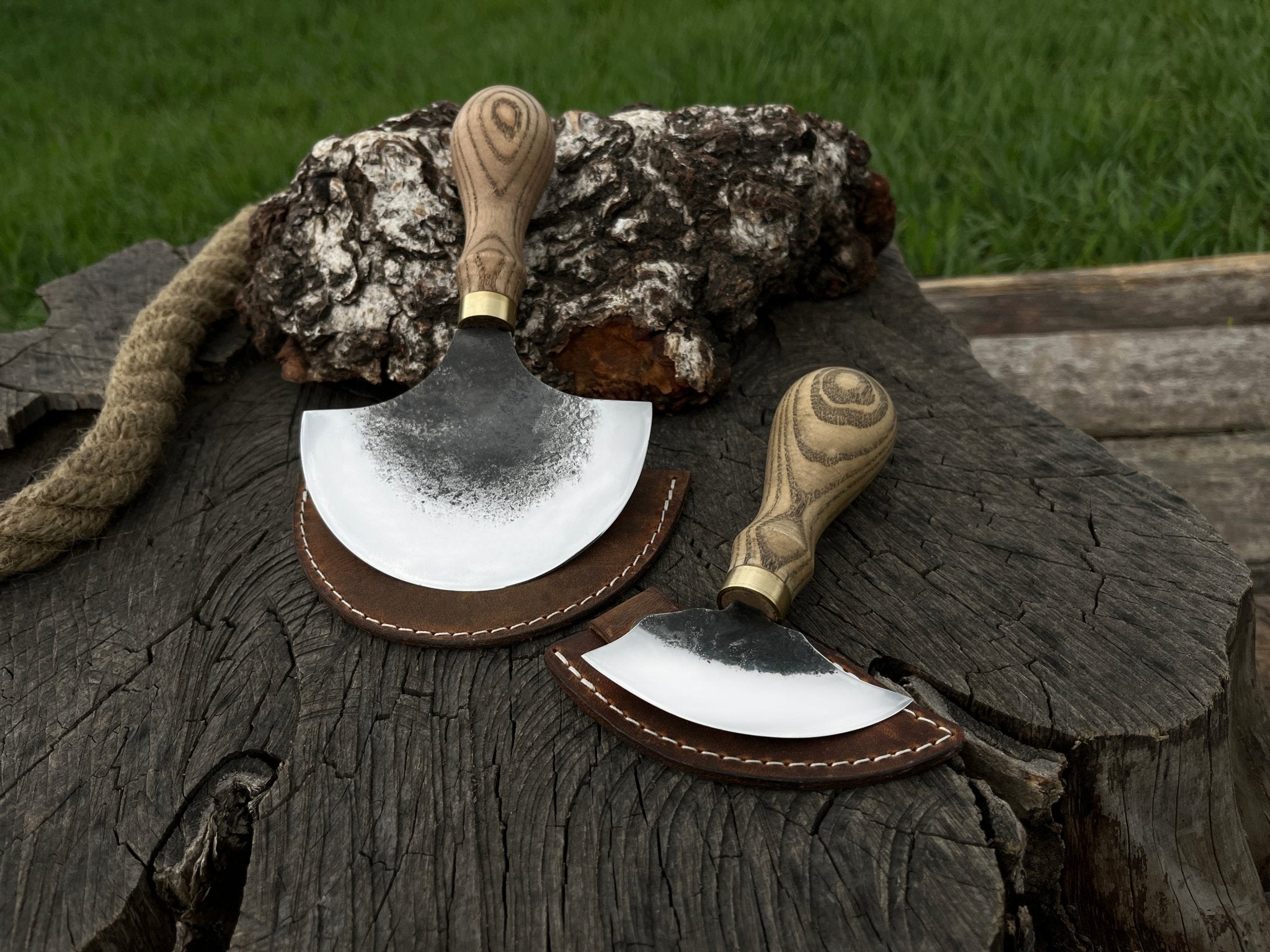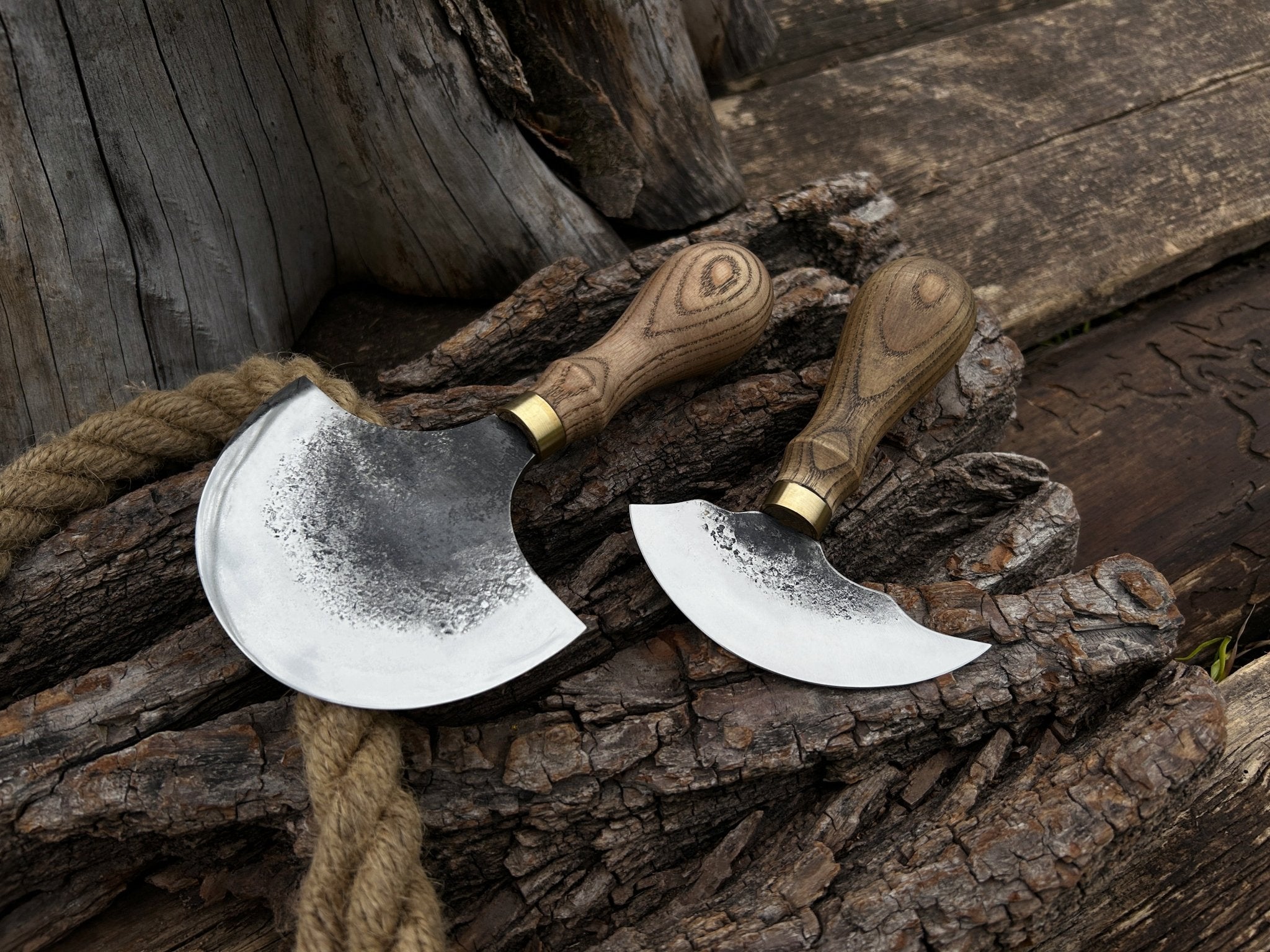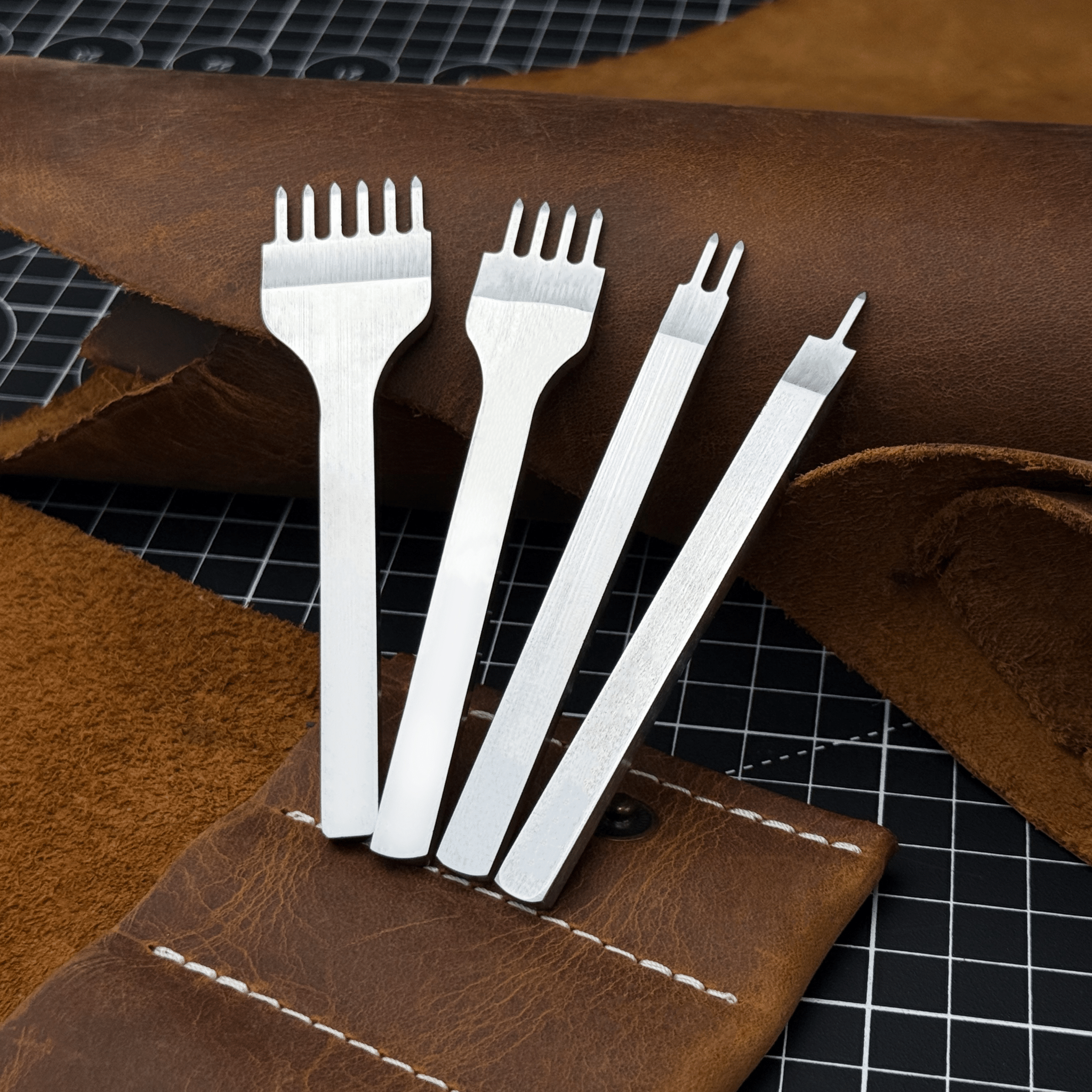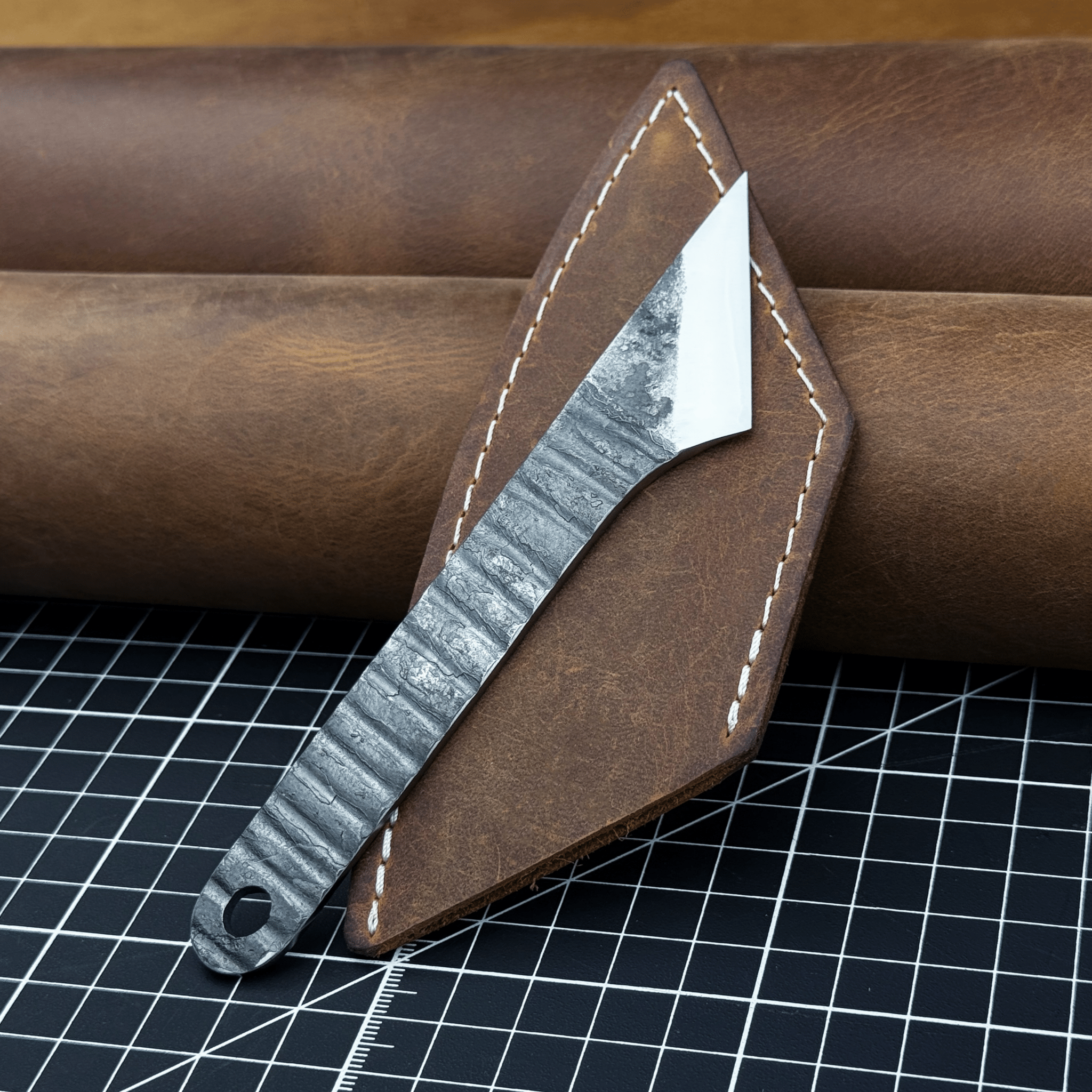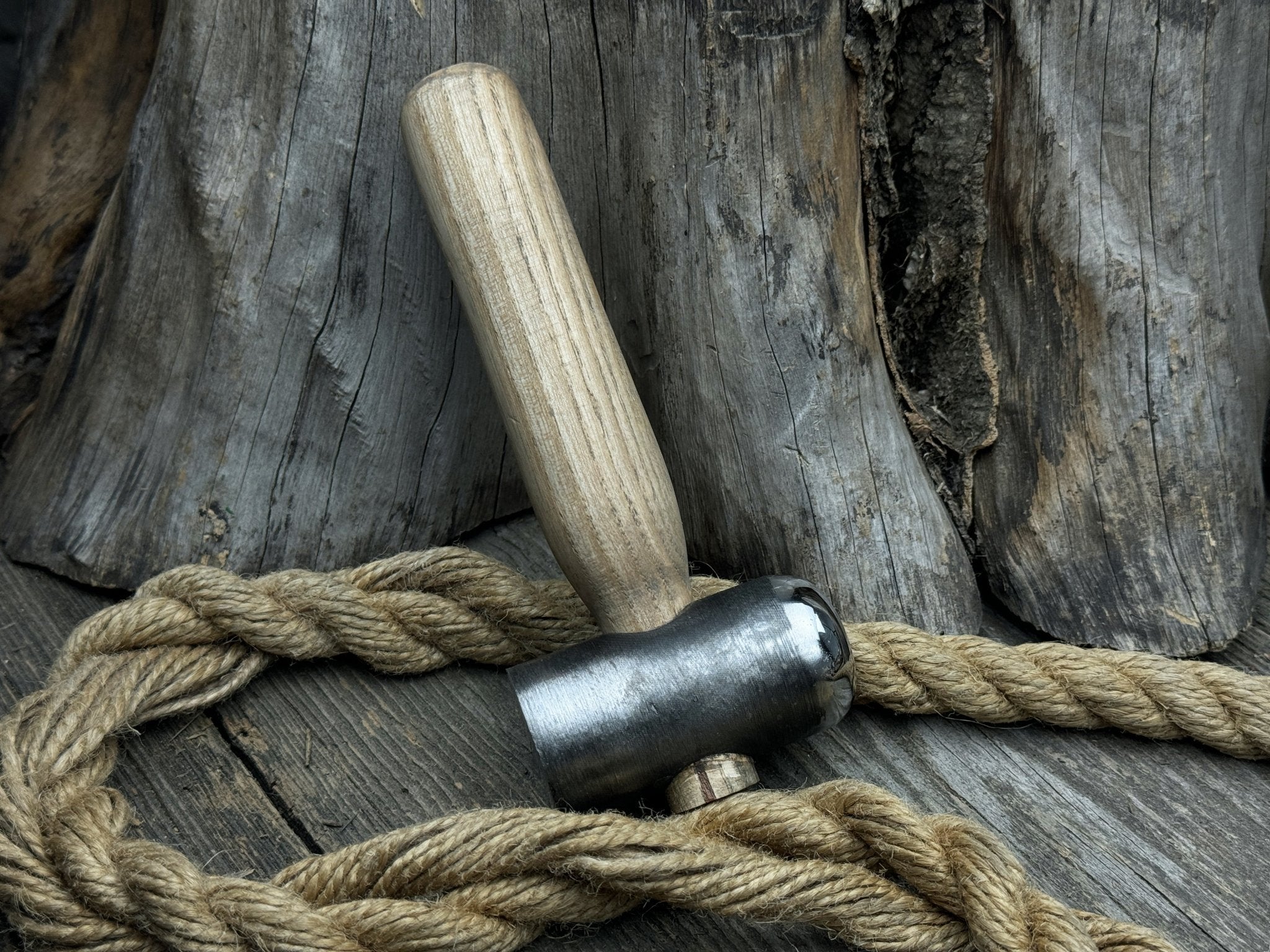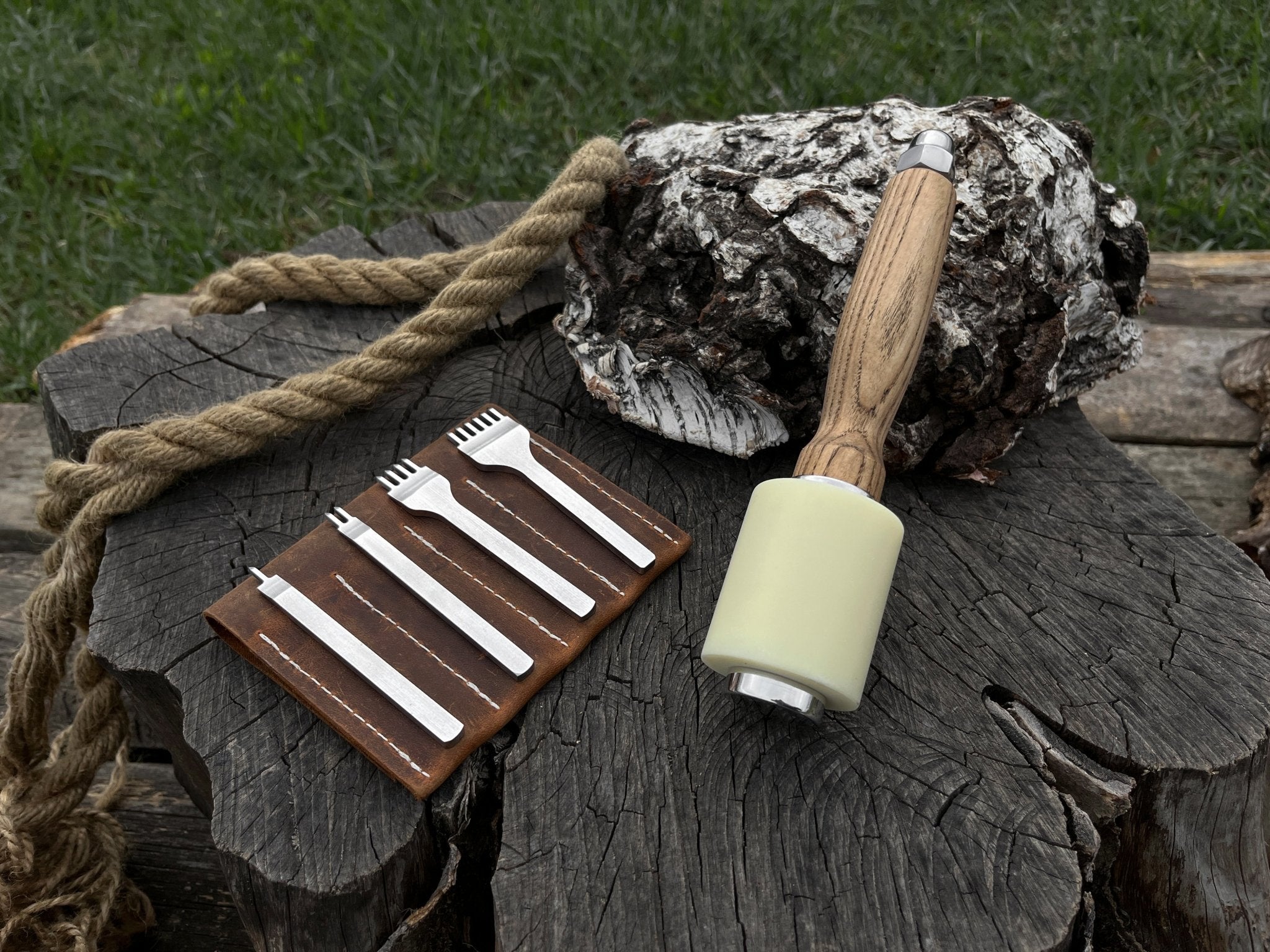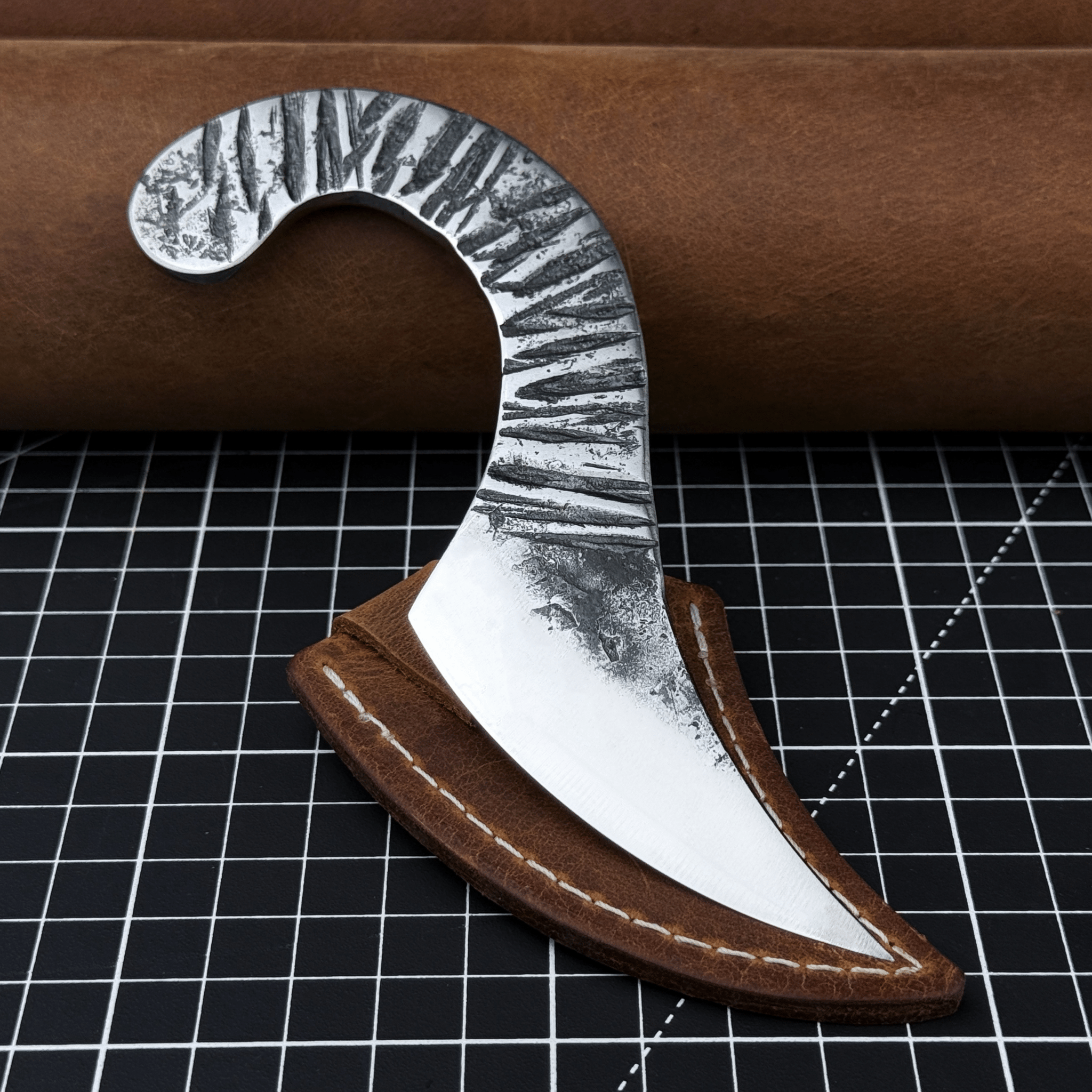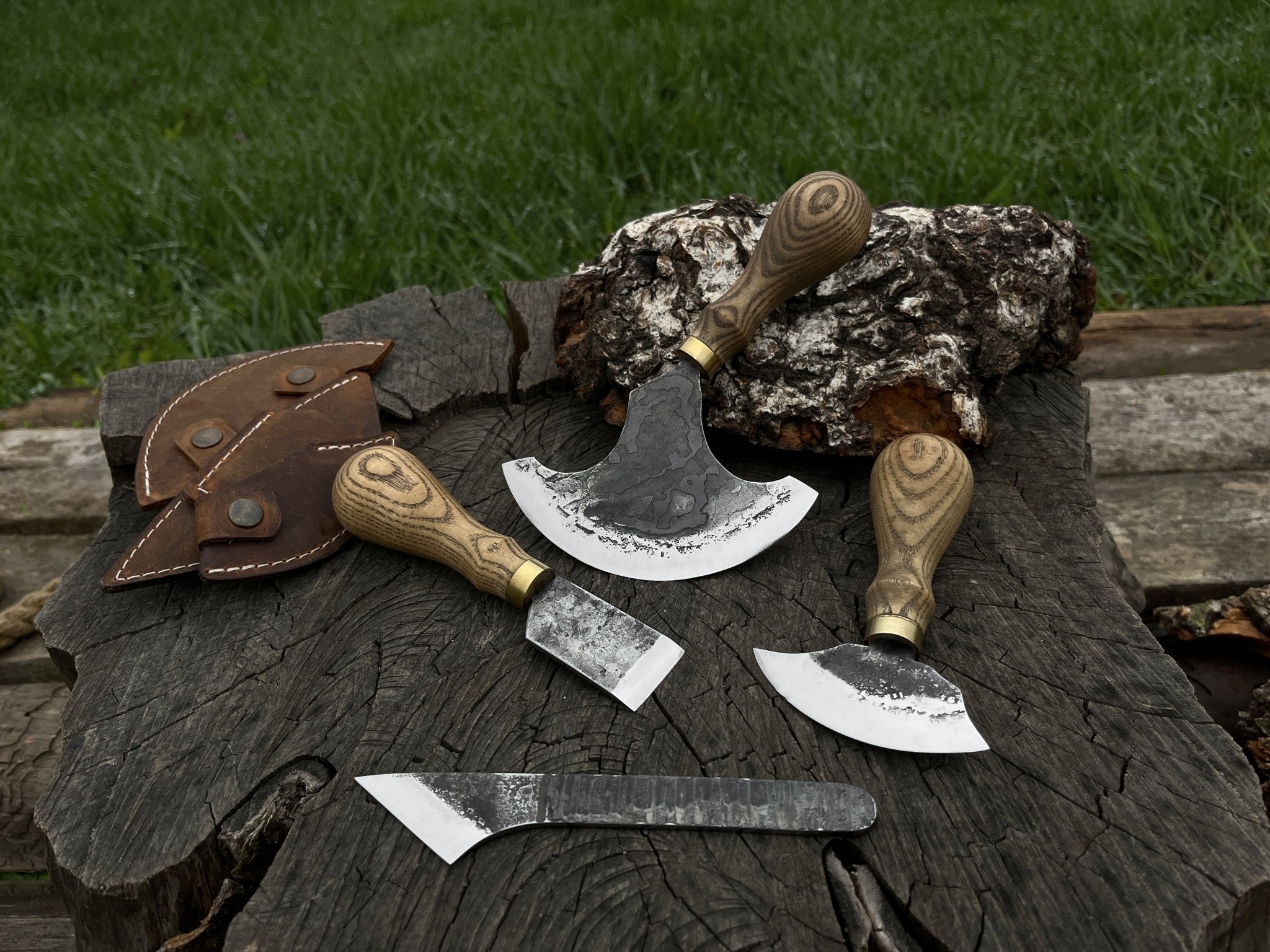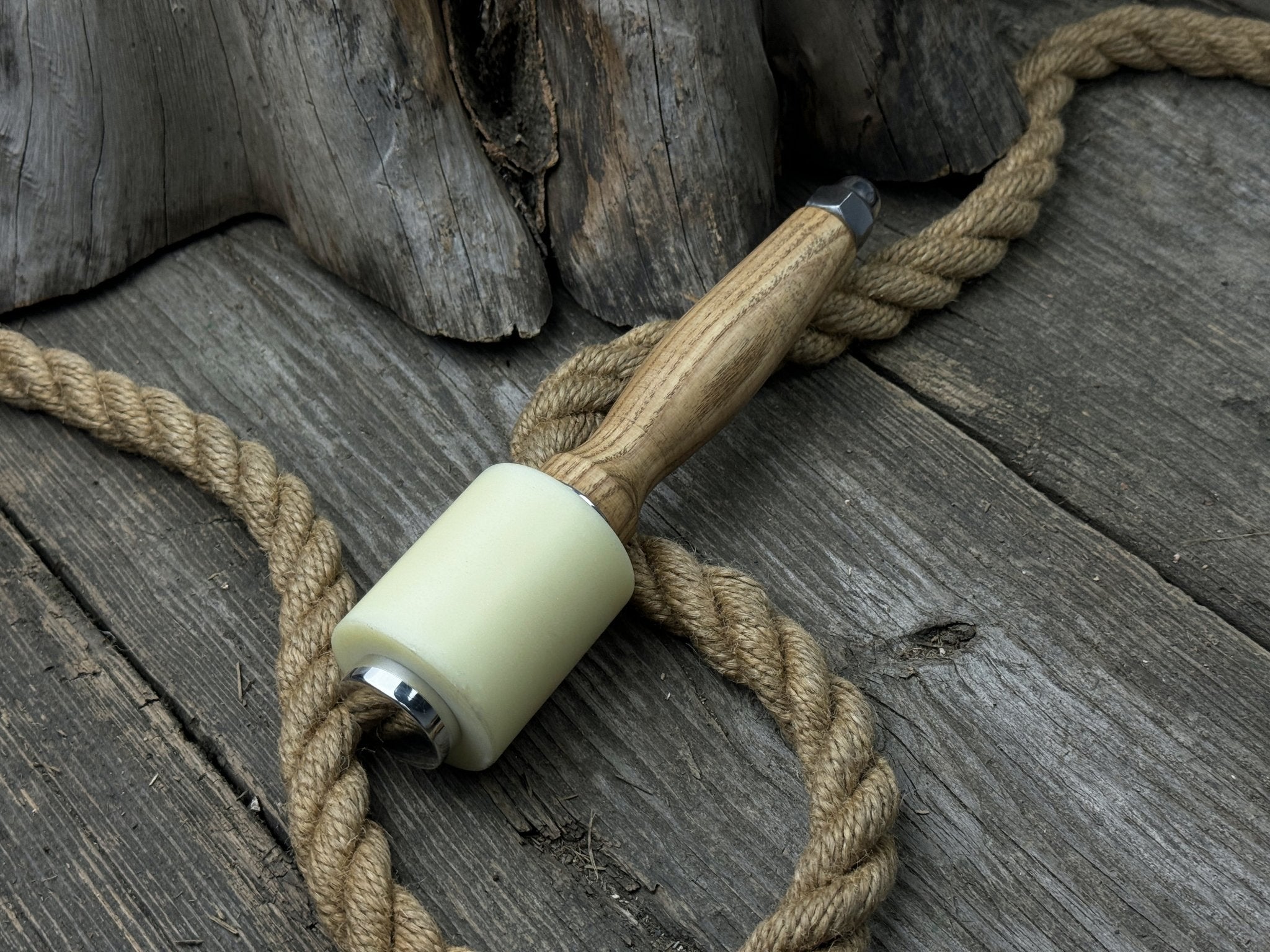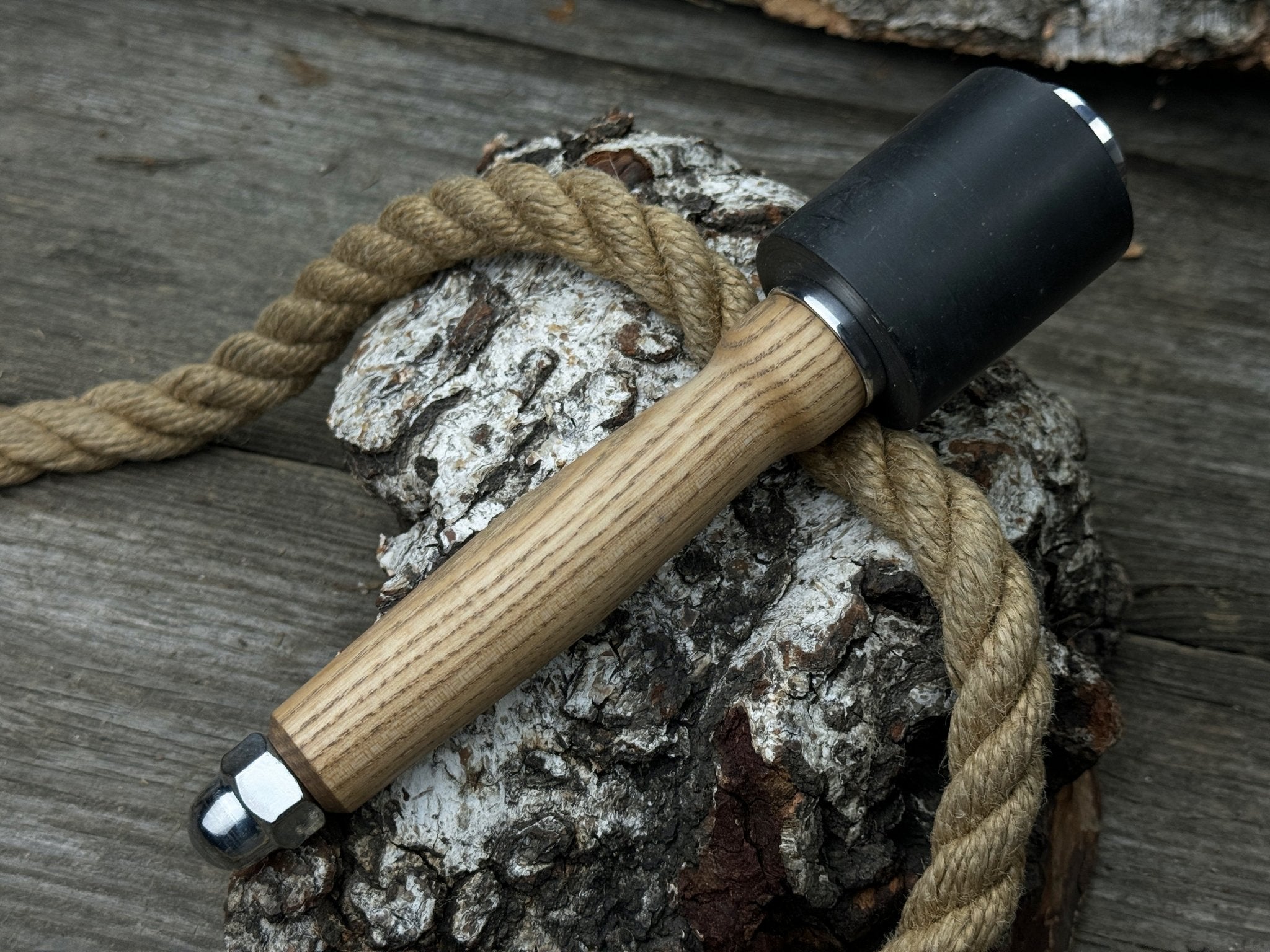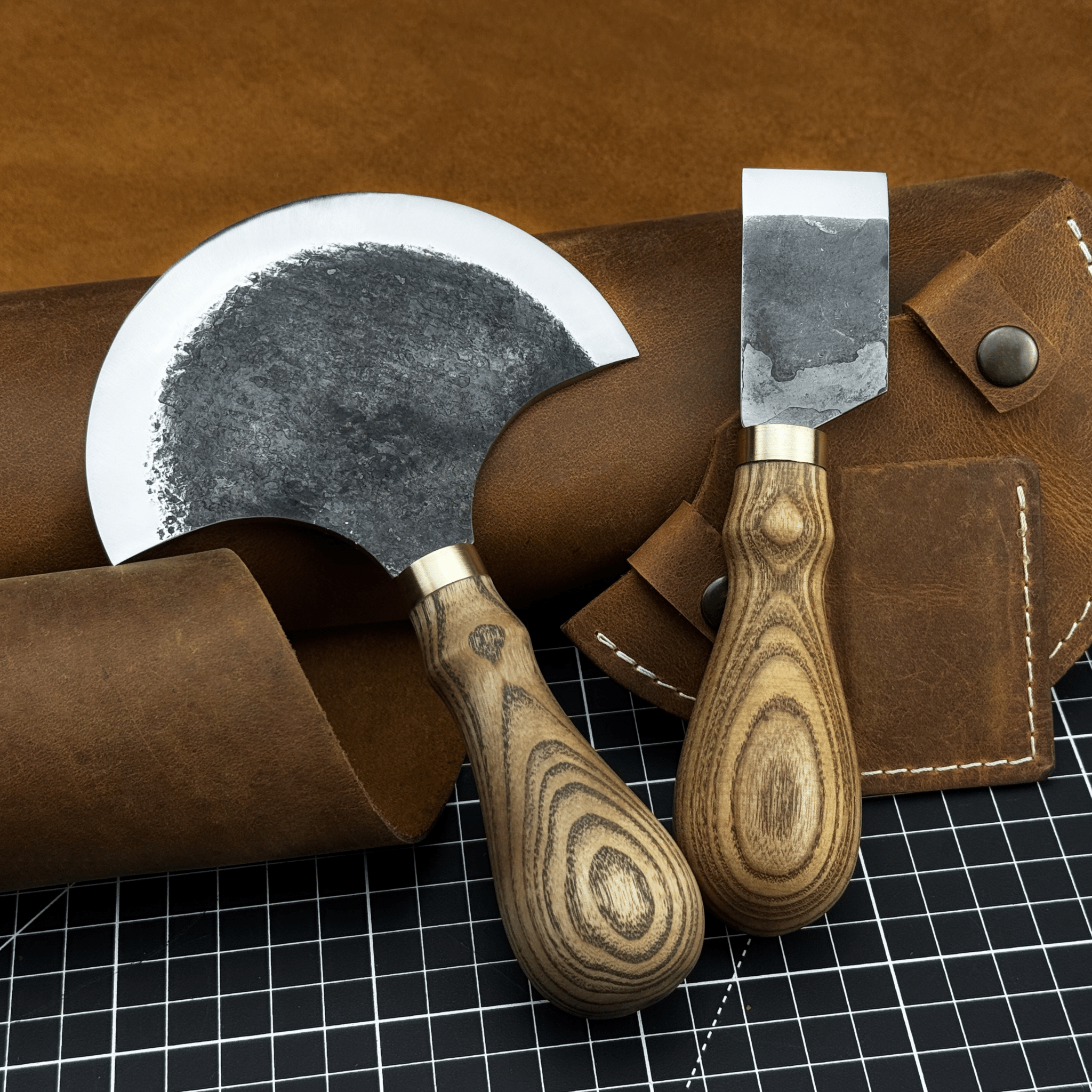2-Piece Rounded Leather Knife Set
2-Piece Rounded Leather Knife Set
4-Piece Diamond Style Leather Pricking Iron Set, 1, 2, 4, 6 Prongs
Marking Knife Kiridashi with leather sheath, 4 cm (1.57 inches)
Hand-Forged Leather Hammer, 500 g (17.6 oz)
4-Piece Diamond Style Leather Pricking Iron and Leather Nylon Hammer
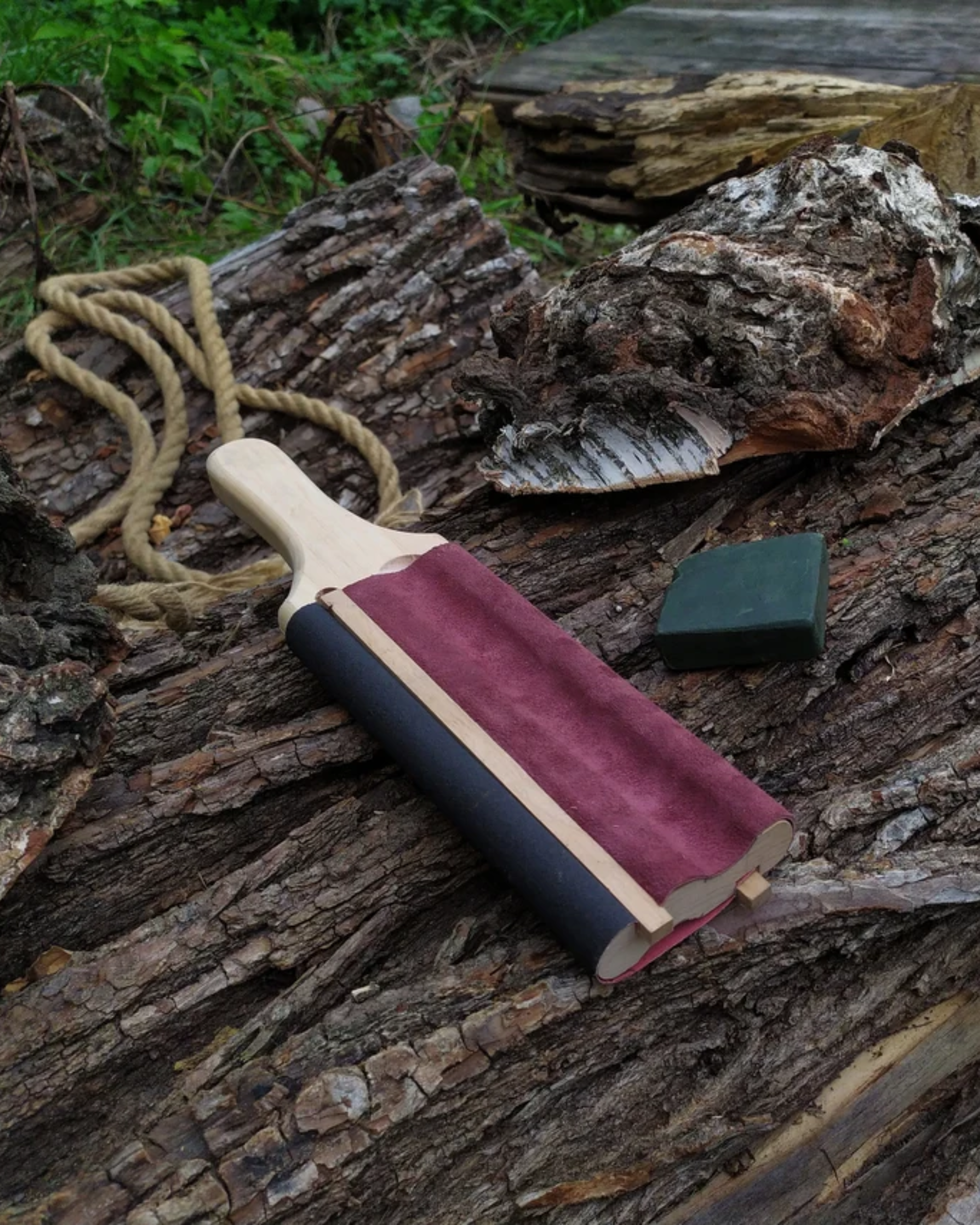
4-Piece Leatherworking Tool Set
Handmade Mallet with Nylon Head, 21.5 cm (8.46 inches)
Mallet with Nylon Head, 350 g (12.35 oz)
2-Piece Straight and Round (Half Moon) Leather Knife Set
Choosing the Right Leathercraft Tools for Your Projects
The Role of Leather Knives in Crafting
Knives are absolutely necessary in leather working, as every project starts with cutting the leather, and precise cuts help create a professional finish. These leather tools can handle different types of work, from cutting and trimming to skiving or grooving the material. Their variety should not scare you away from getting on this exciting craft.
A good place to start is with a utility knife with breakable blades that can be snapped off as they get dull. This option is budget-friendly and sufficient for gaining experience. Patchwork rotary cutters are also recommended for beginners, as they are safe and easy to use. Their circular blades make clean cuts and can cut through thick materials really well (a larger blade size should be chosen for thicker materials).
More specialized tools for leathercraft come into play with practice:
- Traditional Saddler’s Half-Moon Knife or Round Knife: Known for its versatility in cutting curves, but it requires careful handling due to its dangerous edges when properly sharpened.
- Quarter-Moon Knife or Quarter-Round Knife: This one is easier to maintain and is still effective for leatherwork, especially leather skiving.
- Clicker or Utility Knives: Originally used in the shoe industry, these tools cut clean straight lines and curves as well as trim edges well. They feature replaceable blades that can be sharpened.
- Skiving Knives: These are used for thinning leather edges to join two pieces together, helping create smooth seams.
- Swivel Knives: Swivel knives carve decorative elements on leather, thanks to the blade that rotates.
- Shoemaker’s Knives: These tools feature straight or slightly curved blades and are useful for trimming or cutting leather pieces, especially thicker leather.
Importance of Skiving Knives for Leatherwork
Skiving leather creates thin, sloped edges to make it easier to pierce with stitching chisels. For example, a sheath can be skived to prevent unwanted cuts with tools for leather work while giving a polished appearance.
Skiving also makes the material more flexible, which is useful for designs that bend or curve, such as straps or corners. This technique allows for stronger bonds between leather pieces, ensuring the durability of the final product, smoother transitions, reducing bulk, and creating a more aesthetic look.
The choice between leather craft tools like a skiving knife and a bell skiver machine depends on the project's requirements, scale, and budget. A skiving knife is suited for fine, small-scale work, allowing you to adjust the pressure and angle to achieve the desired thickness. Skiving knives can be applied to different types of leather and for different skiving techniques, like feathering edges or creating bevels.
For larger, repetitive tasks that require uniform skiving in large quantities and at a higher speed, a bell skiver machine is a more efficient option among leather work supplies.
Leather Knives: Types and Features for Every Need
Key Features of Leather Knives
Quality knives are designed with sharp, long-lasting blades to efficiently cut, trim, and shape leather. They come in various shapes to handle specific tasks, providing the needed levels of control and accuracy. Speaking more broadly, all leather knives share several common features that make them essential tools for leatherworking:
- Precision: Leather knives, like the half-moon knife, cut complex shapes and curves with high precision.
- Sharpness: The quality of blade material allows for clean cuts and can handle cutting thick leather seamlessly.
- Blade Shapes: Leather crafting tools, like clicker knives or patchwork rotary cutters, may feature curved or straight blades, making them applicable in various handmade projects.
- Versatility: Some leather tools, such as clicker knives, can handle straight lines and curves equally well, making them suitable for trimming and skiving tasks.
Round Knives for Versatile Cutting
One of the versatile leatherworking supplies is the round knife. As mentioned before, it is easily recognized by its half-moon-shaped blade. With the handle positioned at the top, it allows for different grips and versatile cutting techniques, primarily used for straight and curved cuts as well as for skiving leather.
- Straight Cuts: To cut straight lines with the round knife, use the middle of the blade, either freehand or with the straightedge, while keeping downward pressure low.
- Curved Cuts: To achieve smooth, tight-radius curves and slots, use the points of the blade with the handle down.
- Skiving: To make leather more flexible, especially for belts, straps, and preparing seams, hold the leatherworking tool blade at a low angle, and apply a slicing motion rather than a straight push. Adjust the blade angle to achieve sharper bevels by raising the blade higher.
Utility Knives for Precision Cuts
Utility knives are used in many crafts including leatherworking. These leather crafting tools have small, fixed blades, often replaceable, with a locking mechanism to secure the blade in place. Utility knives help achieve precise cuts thanks to their sharp, narrow blades. They can also create straight lines and intricate curves and are pretty straightforward to use. For precision cutting, here are a few common tips to follow:
- Sharp Blade: This is a golden rule - always ensure the blade is sharp by regularly changing or sharpening it during the work.
- Cut on a Self-Healing Mat: To prevent the blade from dulling quickly, cut on a self-healing mat. The mat will also prevent the blade from getting stuck.
- Maintain Steady Hand and Angle: Use a steady hand, apply light pressure, and hold the knife at a low angle to the leather. This will give you more control over the cutting process.
- Guided Cuts: For straight cuts, use a straightedge or metal ruler.
- Rotating the Leather: For curves, rotate the leather to maintain a steady cutting angle instead of twisting the knife around curves.
Skiving Knives: A Must-Have Tool for Edge Shaping and Thinning
Types of Skiving Knives and Their Uses
Skiving knives are specifically designed to thin down leather and create smooth, feathered edges. The leather tools vary depending on the task they were created for:
- Straight Skiving Knives: As the name suggests, this knife features a straight, narrow blade for making long, straight skives used for preparing leather edges for stitching and gluing.
- Curved Skiving Knives: The curved blade allows for skiving around curves and corners, usually used in handmade projects that require detailed work.
- French Skivers: This tool features a flat, chisel-like blade suited for thinning large areas of leather.
- Japanese Skiving Knives: Angled blades can handle both straight and curved cuts and are especially effective when working on fine crafts.
- Bevel Point Skiving Knives: A pointed blade with a beveled edge widely used in decorative leatherwork.
The leather craft tools can help achieve various skiving goals. In split skiving, such tools as the French shave, skiving, or paring knives reduce the overall thickness of the leather, particularly in layered leather projects like wallets.
Step skive creates a stepped leather thickness used for turned edges, making it easier to fold and stitch. The French shave can remove strips of leather along a marked line, while a paring knife can scoop and taper the material gradually.
In the bevel and slope skive technique, round and skiving knives reduce the leather to half thickness or less and create long, even slopes, particularly on bag seams or larger pieces of leather.
Selecting a Skiving Knife for Different Leather Types
For vegetable-tanned hides, the tool of choice is a French shave or paring knife. Their blades ensure precise and controlled thinning of the leather, creating clean bevels or step skives. Together, these tools for leatherworking help achieve a smooth finish on firm hides.
For softer, chrome-tanned leathers, craftsmen typically choose the Japanese skiving knife, as it creates smooth slopes without damaging the leather. The knife perfectly trims excess material after gluing or rounding corners on softer materials. While a rotary cutter can also be used for softer leathers, it is more suitable for straight cuts and broader areas.
Common Leathercraft Challenges Solved by the Right Knives
Achieving Clean, Even Cuts Without Fraying
When it comes to clean cutting, the first and most essential tip is to keep blades sharp at all times. Additional leather making supplies that can help achieve even cuts include a cutting mat and straight edge or metal ruler to guide the cutting motion. The basic cutting techniques are as follows:
- Mark a cutting line with a fine-tip pen or scratch awl.
- Hold the knife firmly and control the pressure; it should not be too strong.
- Always cut along the leather grain to reduce the risk of fraying.
- Avoid cutting the leather in one go, make several light passes instead.
- Keep the blade perpendicular to the leather surface.
- Use a rotary cutter for long, straight cuts.
Reducing Hand Fatigue in Complex Projects
Complex projects require long hours of work. To minimize hand strain while using your craft kits, consider this advice:
- Maintenance: Maintain and change blades regularly, as sharp blades require less effort to cut through thick leathers.
- Workstation: Ensure your workstation is at a comfortable height to allow your arms to rest naturally. Use a chair with good back support.
- Cutting Techniques: Avoid gripping too tightly and practice maintaining the proper cutting angle to reduce the need for excessive force.
- Ergonomic Tools: Choose lightweight leather crafting tools with ergonomic handles.
Maintaining Control with Precise Blades
To master accurate cuts in your handmade projects, practice on scrap leather pieces to get a feel for the blade and improve your cutting angle. For most leather knives, a 45-degree angle works well. Slow, deliberate cutting is preferable, as it reduces the chances of mistakes.
Clean and store blades properly after each use to maintain their condition. For detailed work, use templates to trace and guide your cuts.
Reducing Leather Waste with Sharp, Efficient Tools
Using sharp leather knives along with the right leatherworking supplies, such as cutting mats, rulers, and templates, can significantly minimize waste.
The key approach is to plan the layout of your patterns on the leather, maximizing material use and minimizing offcuts. Test cuts are also necessary to ensure your measurements and techniques are accurate.
Match leather tools to their appropriate tasks carefully. If you work on a thicker leather, consider making multiple light passes to reduce the risk of unwanted slipping.
